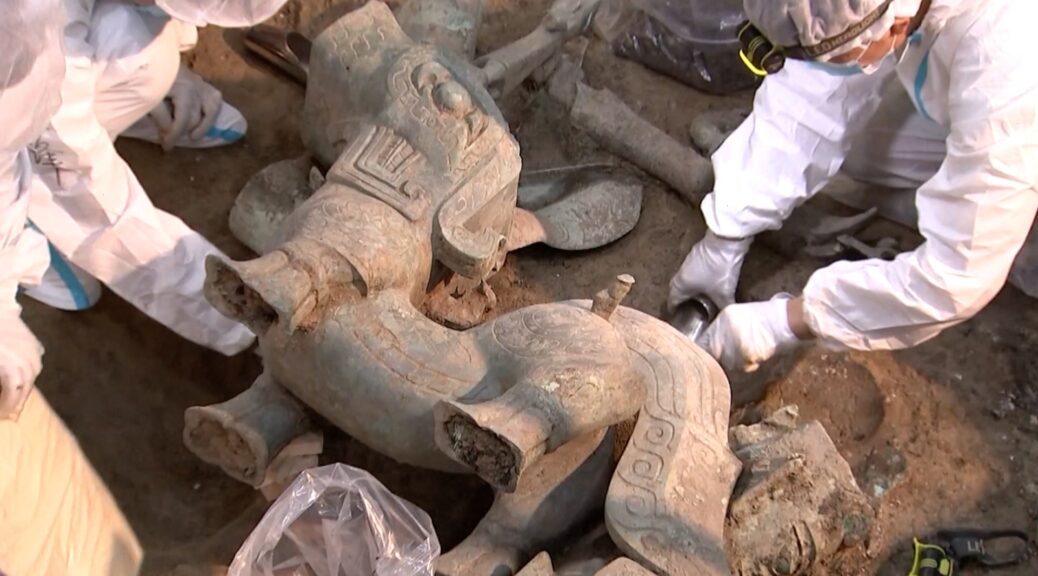Chinese archaeologists have unearthed a big bronze beast – one of the most highly anticipated treasures of the Sanxingdui ruins – a year after spotting it in a pit at the mysterious site in Sichuan province.

Archaeologists first spotted the animal figure more than a year ago but had to remove other artefacts before they could dig it out of the pit.
The bronze was discovered in July last year, but archaeologists were not able to lift it out of the pit until Wednesday, when other bronze objects piled on top of the statue were removed.
The bronze animal is the biggest ever found in decades of digging at the site. It weighs around 150kg (330lbs) and has a large mouth, small waist, huge ears and four embellished hooves.
According to Zhao Hao, a Peking University archaeologist in charge of the pit that contained the object, all other bronze animals uncovered at the site since digging began in the 1980s measured around 20 to 30cm (7.9 to 11.8 inches).
“But this one is very large in size, with height and width both measuring about one metre (3.3 feet). It’s the only one at the whole site,” Zhao was quoted by state broadcaster CCTV as saying.
A human figurine was attached to what looks like a horn on the creature’s head. The figure was dressed in a long gown and appeared to be riding or controlling the animal.
Another human-shaped artefact was found lying by the animal’s side with its head missing. Human statuettes in different postures were also found nearby, which Zhao speculated could originally have been attached to the bronze beast’s body.
Excavation at Sanxingdui will continue until September, after which archaeologists will begin restoring, categorising and researching the newly uncovered treasures.
“A holy tree was cast on the chest of the animal, showing people in Sanxingdui worshipped the holy tree or treated it as a god,” Zhao was quoted as saying. “Such a configuration has not been found among any previously excavated artefacts. It’s extremely interesting.”
His team also speculated there could be a larger object that was attached to the beast’s back and has yet to be unearthed.
The Sanxingdui ruins, considered one of the most important archaeological discoveries of the 20th century, are believed to be at the heart of the mysterious Shu kingdom, which dates back some 4,500 years. But researchers have yet to find written records of the kingdom.
The ruins were discovered in the southwestern city of Guanghan in the late 1920s, but excavation work did not start until the 1980s, when archaeologists made a breakthrough and discovered two sacrificial pits containing more than 1,700 artefacts.
More than 400 class A artefacts – the most historically and culturally valuable, according to China’s classification system – were unearthed at the ruins during the first two decades of digging.
The excavation was paused in 2002, resuming only in 2020, after six more pits were identified. More than 13,000 artefacts have been uncovered since then, including a bronze sacrificial altar with human figures, a bronze sculpture with a human head and snake body and a dragon-shaped bronze statue with a pig’s nose.
This round of field excavation work will be completed in September, after which archaeologists will begin restoring, categorising and researching the newly uncovered artefacts.





